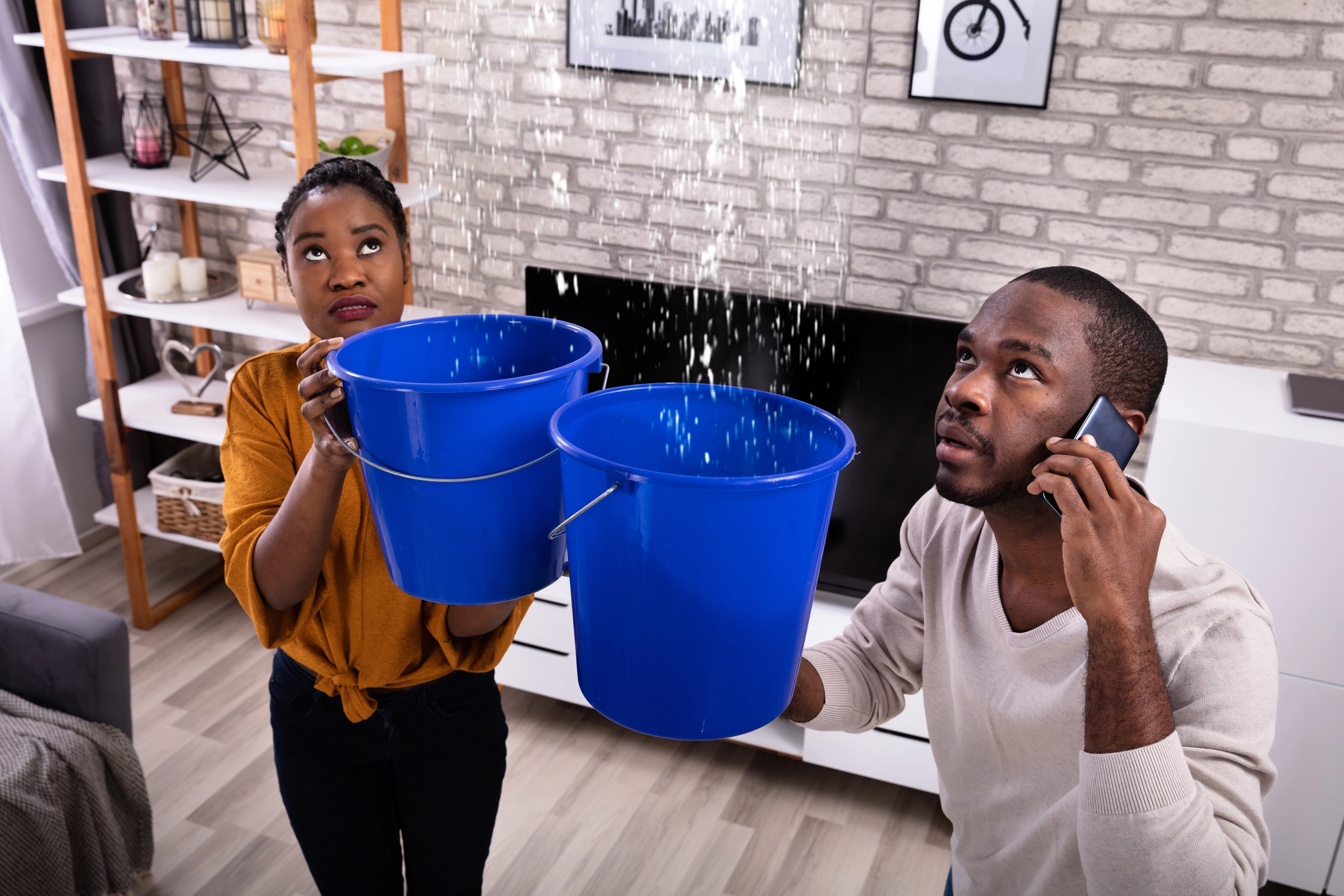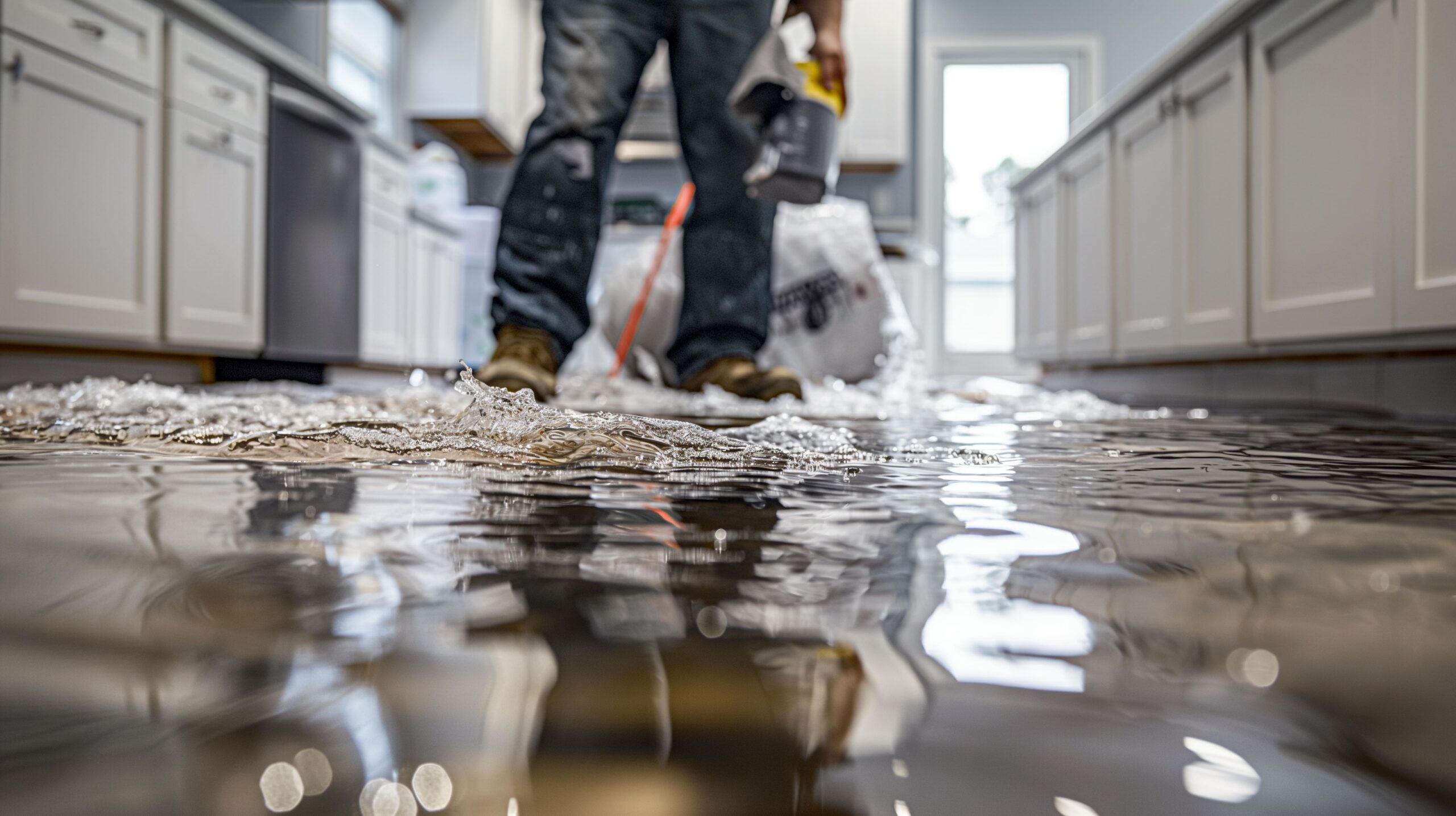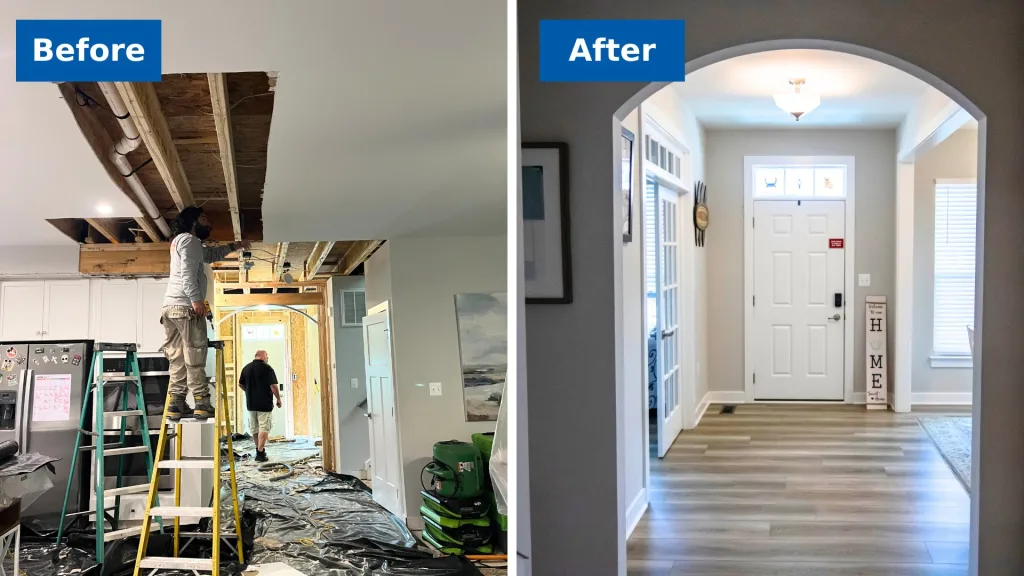7 Key Reasons You Should Never Delay Flood Damage Restoration
Wiki Article
Necessary Steps to Follow for Reliable Water Damage Restoration in your house
When confronted with water damage in your house, understanding the vital steps for efficient remediation can make all the distinction. You need to analyze the damage and guarantee security prior to taking on the trouble. Quiting the resource of water is crucial, but it's simply the beginning. There's a collection of actions you need to take to protect your residential property from more concerns once you've handled that. Let's explore what you need to do next.Examine the Damage
When you discover water damages in your house, the initial step is to examine the damages completely. Begin by recognizing the resource of the water invasion. Check for leaks, burst pipes, or other problems creating the issue. Next off, examine the affected locations for noticeable signs of damages, consisting of staining, warping, or mold development. Do not forget to look in concealed areas like behind wall surfaces or under floor covering, as water can permeate right into these locations unnoticed.Document the damages by taking clear images and notes. When reviewing the circumstance with your insurance provider or remediation professionals, this will aid you. Focus on the kind of materials affected, as different products call for various repair methods. Finally, examine the degree of the damages. Is it substantial or small? Comprehending the range will certainly direct you in deciding whether to manage it on your own or call in the specialists for a more substantial remediation procedure.
Make certain Safety and security
Before you start any type of remediation work, assuring your security is essential. First, examine the condition of your home. If the water's deep or if you notice electrical threats, don't get in the area. Switch off the electrical energy and gas supply to avoid mishaps. Use protective equipment like masks, handwear covers, and boots to shield yourself from impurities or mold.It's crucial to remain knowledgeable about your environments; expect slippery surfaces and sharp things. Treat it as unsafe waste if the water is from a sewer back-up. Keep family pets and children far from affected locations to avoid exposure.Once you have actually taken these precautions, you can proceed with the reconstruction procedure. Keep in mind, your safety comes first, and if you're ever before unclear, it's best to seek advice from a professional. Taking these steps will certainly aid assure you're ready to take on the remediation safely and efficiently.Quit the Source of Water
After ensuring your security, the following step is to quit the source of water. Recognize where the leak is coming from. Maybe a ruptured pipe, a defective home appliance, and even hefty rain entering with a damaged roofing system. If it's a plumbing issue, switch off the primary water system to your home to avoid more flooding. For devices, disconnect them and shut off their water supply valves.If the source is outside, like rain, try to divert it far from your home using sandbags or various other obstacles. For minor leaks, you may be able to make use of tape or a sealer briefly until a specialist can repair it. Remember, resolving the resource rapidly is important to decreasing damages and stopping mold and mildew growth. Once you have actually stopped the water, you'll remain in a much better setting to move on to the next action in the reconstruction process.
Remove Excess Water
Act quickly to eliminate excess water, as standing water can result in more substantial damage and mold growth. Collect your devices: a wet/dry vacuum cleaner, containers, and towels. You can utilize towels to saturate up the moisture if the water is superficial. For much deeper water, a wet/dry vacuum is your ideal wager. Make sure to empty the vacuum frequently to avoid overflow.If the water is polluted, like from a sewer backup, put on safety gear, including masks and handwear covers, to keep on your own risk-free. Once you have actually gotten rid of as much water as possible, examine for surprise pockets of dampness in corners and under furniture, as these can harbor mold.Don' t neglect to shut off electric home appliances and power outlets in wet areas to stop hazards. This first step is essential in lessening damage and setting the phase for an effective remediation procedure.Dry and Dehumidify the Area
It's vital to dry and dehumidify the area completely as soon as you've gotten rid of the excess water. Begin by utilizing dehumidifiers effectively to pull dampness out of the air and protect against mold development. Watch on moisture levels to assure the space dries completely.Eliminate Standing Water
To effectively tackle water damage, you need to concentrate on eliminating standing water as rapidly as possible. Beginning by collecting essential devices, like a wet/dry vacuum or a pump, relying on the volume of water. If the water is superficial, a vacuum cleaner ought to suffice. For bigger quantities, a pump is much more efficient. While working, make certain to put on protective gear to keep yourself secure from impurities. As you eliminate the water, take notice of concealed areas like under furnishings or in corners where water may collect. Your room will start to dry out as soon as you've gotten rid of the majority. This step is important, as remaining water can bring about mold and mildew growth and much more comprehensive damages.Usage Dehumidifiers Properly
Just how can you properly use dehumidifiers to dry and dehumidify your space? Start by placing your dehumidifier in the most afflicted area, ideally where Flood Damage Restoration water damage is most severe. Make certain to close all windows and doors to produce a covered environment. Switch on the dehumidifier and set it to the appropriate moisture degree, typically around 30-50%. Vacant the water collection storage tank often, or consider making use of a model with a continuous drainage alternative for convenience. Preferably, make use of followers to improve air flow, aiding the dehumidifier work a lot more efficiently. Maintain the dehumidifier running till you're positive that the location is completely dried out, preventing mold and mildew development and added damages (Water Damage Restoration St George UT). This action is vital for effective water damage restorationMonitor Humidity Degrees
Surveillance moisture degrees is crucial throughout the drying procedure, as it helps guarantee your room continues to be without excess wetness. Purchase a reputable hygrometer to track moisture accurately. Ideally, you intend to maintain degrees between 30% and 50%. If moisture analyses increase above this array, you may require to readjust your dehumidifiers or followers to improve air movement. Check the readings routinely, especially in locations prone to moisture, like cellars or washrooms. If you observe persistent high humidity, consider enhancing air flow or making use of added dehumidifiers. Remaining on top of these degrees not just accelerates the drying process yet also protects against mold and mildew growth, guaranteeing your home remains comfy and secure.Tidy and Disinfect Affected Surfaces

Restore and Fix Your Home
After cleansing and sanitizing the impacted areas, it's time to recover and fix your home. Begin by assessing the damages. Look for architectural problems, like deteriorated floors or walls, and resolve any necessary repair work. Replacing harmed drywall or floor covering is crucial for both visual appeals and safety.If your furniture or possessions were impacted, take into consideration whether they can be restored or need replacement. Clean or professionally recover things where possible.Next, touch and repaint walls up any locations that need attention. This not only enhances look however additionally secures surfaces from future water damage.Don' t forget to check your plumbing and home appliances for leaks, making certain everything's operating properly. Ultimately, consider setting up a dehumidifier to stop future dampness problems. By taking these actions, you'll restore your home to its former splendor and produce a safer living environment.Often Asked Questions
How Long Does Water Damage Restoration Commonly Take?
Water damages remediation generally takes anywhere from a few days to numerous weeks, depending upon the extent of the damages (Water Damage Cleanup). You'll intend to analyze the situation quickly to reduce more difficulties and guarantee proper reconstructionWill My Insurance Policy Cover Water Damage Reconstruction Prices?
Your insurance coverage may cover water damage remediation prices, but it depends on your policy. Inspect your insurance coverage details and call your insurance coverage agent to clarify what's included and what you require to sue.
Can I Manage Water Damage Reconstruction Myself?
You can manage water damage reconstruction yourself, but it's crucial to assess the scenario initially. You may want to call professionals if it's substantial. Always prioritize safety and security and assure you have actually obtained the right devices.What Are the Indicators of Hidden Water Damages?
You may notice indications of concealed water damages like distorted walls, musty smells, or staining. If your floors really feel spongy or you place mold and mildew, it's time to investigate further prior to the situation aggravates.Exactly How Can I Stop Future Water Damage in My Home?
To avoid future water damage in your home, you must consistently check pipes, seal fractures, preserve gutters, and guarantee appropriate water drainage. Installing a sump pump and moisture obstacles can likewise help maintain your room completely dry. When you discover water damages in your home, the very first action is to examine the damages extensively. Act quickly to remove excess water, as standing water can lead to much more substantial damages and mold and mildew growth. To efficiently deal with water damage, you need to concentrate on getting rid of standing water as swiftly as feasible. As you get rid of the water, pay attention to hidden areas like under furniture or in corners where water may gather. Water damages remediation commonly takes anywhere from a couple of days to a number of weeks, depending on the extent of the damage.Report this wiki page